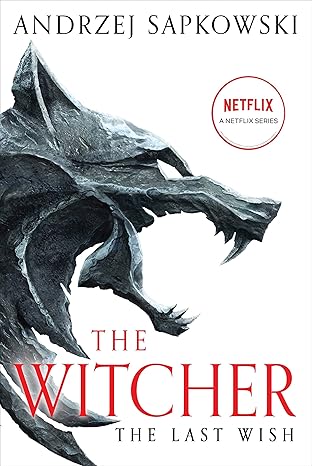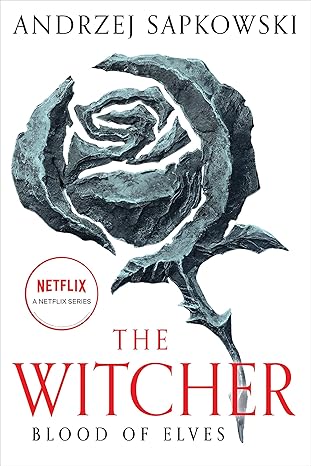
How to Read Andrzej Sapkowski's Books on Witcher book timeline
How to Read Andrzej Sapkowski's Books on Witcher Book Timeline
Estimated Reading Time: 10-12 minutes
Introduction
Andrzej Sapkowski, a Polish author born in 1948, is renowned for his contributions to fantasy literature, particularly through his iconic series, "The Witcher." His unique blend of Slavic mythology, moral complexity, and rich character development has captivated readers worldwide. The Witcher series, which includes short stories and novels, presents a nuanced exploration of themes such as destiny, ethics, and the nature of humanity. This guide will delve into the key works that shape the Witcher book timeline, focusing on "The Last Wish," "Sword of Destiny," and "Blood of Elves." Understanding these texts provides not only a deeper appreciation of Sapkowski's narrative craft but also insights into the philosophical undercurrents that inform his storytelling.
Why Andrzej Sapkowski's Perspective Matters
Sapkowski's approach to the Witcher book timeline is distinctive due to his integration of folklore, history, and philosophical inquiry. Unlike many fantasy authors who rely on traditional tropes, Sapkowski subverts expectations, presenting morally ambiguous characters and complex dilemmas. His narratives challenge readers to consider the implications of choice, the weight of destiny, and the shades of gray in human nature. This perspective is particularly relevant in today's world, where ethical considerations are increasingly complex. Sapkowski's works encourage readers to engage critically with these themes, making them not only entertaining but also profoundly thought-provoking.
Overview of Recommended Books
The Last Wish
"The Last Wish" serves as the introduction to the Witcher saga, comprising a collection of interconnected short stories that establish the world of Geralt of Rivia, a monster hunter known as a Witcher. The book explores themes of fate, love, and the moral ambiguities of choice.
Main Themes and Arguments:
- Fate vs. Free Will: The stories often grapple with the tension between destiny and personal agency, as Geralt navigates a world where his choices are frequently influenced by external forces.
- The Nature of Humanity: Through encounters with various creatures and characters, Sapkowski examines what it means to be human, often blurring the lines between monster and man.
Historical Context and Significance: Published in 1993, "The Last Wish" emerged in a post-communist Poland, reflecting a society grappling with its identity. The blending of Slavic folklore with contemporary issues resonates with readers seeking deeper meanings in fantasy literature.
Key Insights:
- Moral Complexity: Geralt's decisions often reflect the idea that there are no clear right or wrong answers, encouraging readers to think critically about ethics.
- Interconnectedness of Stories: The narrative structure emphasizes how individual stories contribute to a larger tapestry, mirroring the complexity of life itself.
- The Role of Love: Romantic entanglements and emotional bonds are portrayed as both a source of strength and vulnerability.
Why Read This Book: "The Last Wish" is essential for understanding the foundations of the Witcher universe. It appeals to readers interested in character-driven narratives and those who appreciate the philosophical exploration of morality and choice.
Sword of Destiny
"Sword of Destiny" continues the journey of Geralt, further developing his character and relationships, particularly with the enigmatic Yennefer. This collection of stories delves into themes of love, loyalty, and the consequences of one's choices.
Main Themes and Arguments:
- The Duality of Love: The stories explore different facets of love, from romantic passion to friendship, highlighting how love can both empower and entrap.
- Destiny and Choice: The tension between destiny and free will is further examined, particularly in how Geralt confronts the paths laid out before him.
Historical Context and Significance: Released in 1992, this collection solidified Sapkowski's reputation as a leading voice in fantasy literature. The stories reflect the complexities of human relationships, resonating with readers across cultures and eras.
Key Insights:
- Love as a Double-Edged Sword: The narrative illustrates how love can lead to both fulfillment and heartbreak, prompting readers to reflect on their own experiences.
- Consequences of Choices: Each story serves as a reminder that choices have far-reaching consequences, urging readers to consider the weight of their decisions.
- Interpersonal Dynamics: The relationships between characters are intricately woven, showcasing the importance of connection in a world fraught with danger.
Why Read This Book: "Sword of Destiny" is crucial for understanding Geralt's emotional landscape and the relationships that shape his journey. It appeals to readers interested in character development and the complexities of human emotion.
Blood of Elves
"Blood of Elves" marks the transition from short stories to a full-length novel, focusing on Geralt's role as a protector of Ciri, a young girl with a mysterious destiny. This book delves into themes of identity, power, and the impact of war.
Main Themes and Arguments:
- Identity and Self-Discovery: Ciri's journey of self-discovery parallels Geralt's struggles with his own identity as a Witcher, highlighting the quest for understanding oneself.
- The Impact of War: The narrative addresses the consequences of conflict, both on a personal and societal level, emphasizing the fragility of peace.
Historical Context and Significance: Published in 1994, "Blood of Elves" reflects the tumultuous political landscape of Eastern Europe, with themes of conflict and survival resonating deeply in a post-war context.
Key Insights:
- The Search for Identity: Ciri's journey underscores the importance of understanding one's origins and purpose, a theme relevant to readers of all ages.
- Mentorship and Growth: The relationship between Geralt and Ciri highlights the significance of mentorship in shaping one's path and identity.
- Consequences of Power: The book explores how power can corrupt and the responsibilities that come with it, prompting readers to consider their own relationship with authority.
Why Read This Book: "Blood of Elves" is essential for understanding the evolution of Geralt and Ciri's relationship and the broader implications of their struggles. It appeals to readers interested in epic narratives and character-driven stories.
How These Books Complement Each Other
Together, these works create a cohesive narrative arc that explores the Witcher book timeline. "The Last Wish" and "Sword of Destiny" establish the characters and themes, while "Blood of Elves" expands on these foundations, introducing new complexities and conflicts. The progression from short stories to a full-length novel allows readers to witness the development of Geralt and Ciri, as well as the evolving themes of destiny, love, and identity.
Who Would Benefit from Reading These Books
These books are ideal for a diverse audience, including:
- Students and Academics: Those studying literature, philosophy, or cultural studies will find rich material for analysis.
- General Readers: Anyone interested in fantasy literature and character-driven narratives will appreciate the depth of Sapkowski's writing.
- Professionals Seeking Practical Wisdom: The philosophical insights can provide valuable reflections on ethics and decision-making in personal and professional contexts.
- Individuals Seeking Personal Growth: Readers looking for stories that resonate with their own experiences will find relatable themes of love, identity, and choice.
Recommended Reading Order
- Start with: The Last Wish - This book introduces the world of Geralt and sets the stage for the themes that will be explored throughout the series.
- Continue with: Sword of Destiny - Building on the foundation laid in "The Last Wish," this collection deepens the emotional and relational complexities of the characters.
- Advanced reading: Blood of Elves - This novel expands the narrative scope, offering a richer understanding of the overarching themes and character development.
Tips for Getting the Most Out of Each Book:
- Take notes on key themes and character developments as you read.
- Reflect on how the stories relate to contemporary issues and your own experiences.
- Discuss the books with others to gain different perspectives and insights.
Conclusion
Andrzej Sapkowski's contributions to the Witcher book timeline are invaluable, offering readers a rich tapestry of stories that explore complex themes of fate, love, and identity. His unique perspective invites us to engage with the moral ambiguities of life and the choices we make. As you embark on this literary journey, allow yourself to be immersed in the world of Geralt, Ciri, and the myriad characters that populate their lives. Explore these works and discover the timeless relevance of Sapkowski's insights—your adventure in the Witcher universe awaits!
Tags: #Andrzej Sapkowski #Witcher book timeline #Philosophy #ReadingGuide #ClassicLiterature #Wisdom
Featured Books

The Last Wish
by Andrzej Sapkowski
Published: 1993
A collection of short stories that introduce Geralt of Rivia and the world of The Witcher.

Sword of Destiny
by Andrzej Sapkowski
Published: 1992
More short stories that expand on Geralt’s relationships and the destiny of a child.

Blood of Elves
by Andrzej Sapkowski
Published: 1994
The first novel in the saga, following Ciri’s training and the beginning of a war.